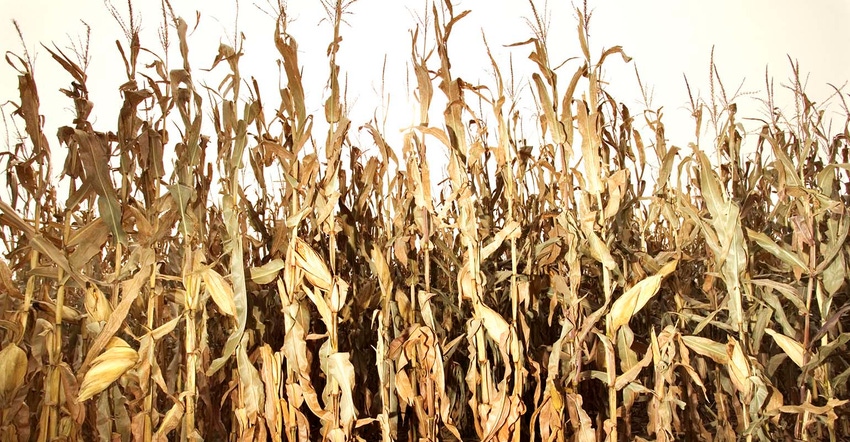
The latest USDA Crop Progress report was delayed by a day due to “technical issues,” meaning analyst had to wait an extra day to see their expectations of falling crop conditions crumble – with USDA moving both corn and soybean quality higher for the week ending Sept. 9.
Analysts expected USDA to dock corn quality a point, moving it from 67% in good-to-excellent condition to 66%. But the agency moved crop quality a point higher instead, pushing it to 68% in good-to-excellent condition. Another 20% of the crop is rated fair (down from 21% the prior week), with the remaining 12% rated poor or very poor (unchanged from the prior week).
A state-by-state look at corn quality shows Nebraska continues to be 2018’s biggest garden spot, with 82% of the state’s corn crop in good-to-excellent condition. The central production corridor of Iowa, Illinois and Indiana all have above-average quality this year, too. On the lower end of the quality spectrum, states like Missouri, North Carolina and Texas continue to struggle.
“Yield estimates based on USDA’s ratings improved for both corn and soybeans last week, matching gains noted on the latest Vegetation Health Index maps out today, says Farm Futures senior grain market analyst Bryce Knorr. “While the VHI showed deterioration in the eastern Midwest due to heavy rains from the remnants of last week’s tropical system, nationwide it showed the same improvement as the Crop Progress condition reports. Our model based on ratings put the yields in a range of 176.1 to 177.7 bushels per acre, up around a third of a bushel.”
Physiologically, 86% of the corn crop has reached dented stage, up 11 points from last week and trending about a week ahead of the five-year average of 75%. And 35% of the crop is now mature, versus a five-year average of 21%.
Corn harvest has also kicked off in several states, reaching a nationwide average of 5% complete. Southern states like Texas (63%), North Carolina (43%), Kentucky (24%) and Tennessee (23%) have made the most substantial progress so far.
USDA also bucked analyst expectations of soybean crop quality, moving from 66% rated good-to-excellent the week prior up to 68% for the week ending September 9. Analysts expected the agency to lower quality by a point this week.
“Soybeans showed even better improvement, gaining nearly a half bushel per acre, though some of the same stress seen in the VHI in the eastern Midwest also showed up,” Knorr says. “The ratings point to yields of 50.7 to 51.6 bushels per acre nationwide.”
Physiologically, the 2018 U.S. soybean crop is maturing faster than it has in recent years, with 31% of the crop now dropping leaves, versus 20% a year ago and a five-year average of 19%.
This year’s spring wheat harvest continues to push toward the finish line, reaching 93% completion – mostly in line with last year’s pace of 94%, and moderately ahead of the five-year average of 85%. Some other crop harvests are just getting started, including sorghum (24% complete) and cotton (10% complete).
And planting for the 2018/19 winter wheat crop is underway with 5% complete, matching 2017’s pace as well as the five-year average. Washington (29% complete) is the runaway leader so far, with 10 other states making single-digit progress so far.
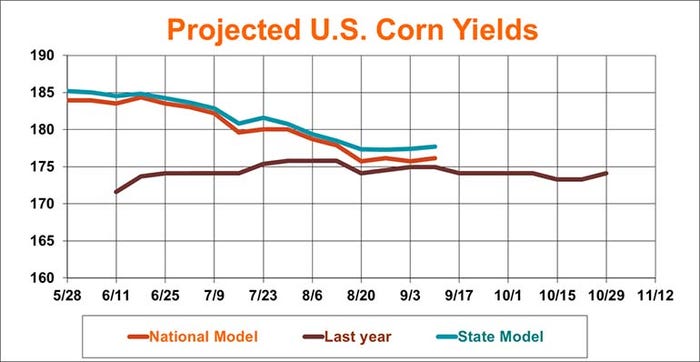
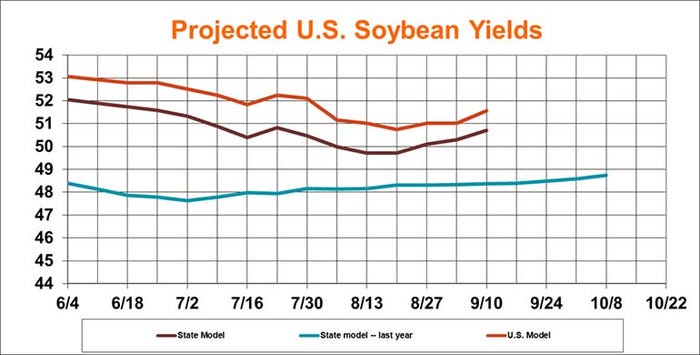

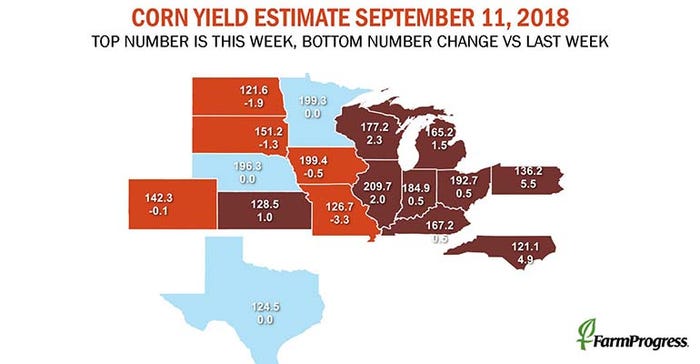
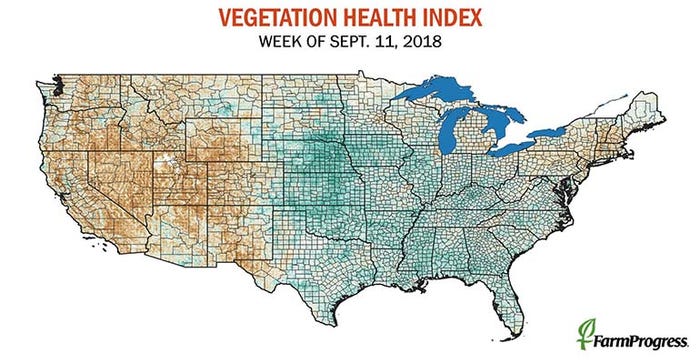
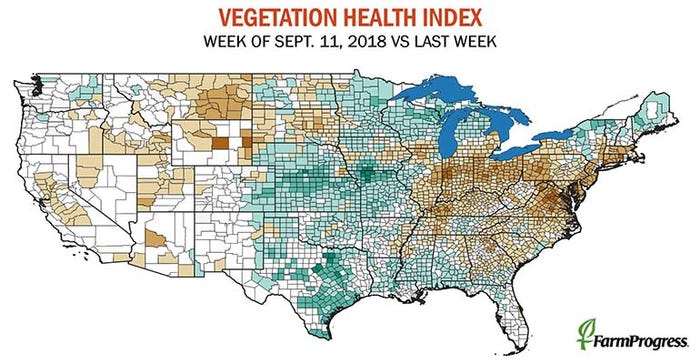
About the Author(s)
You May Also Like






